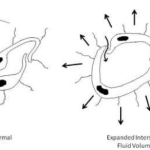Sports taping is an integral part of the skill-set of a sports physiotherapist. The sports physiotherapist will tape an immeasurable number of joints over their career, and thus most become proficient in this skill. Whilst on the surface sports taping may seem simple or easy, I liken it to Texas Hold ‘Em Poker – it takes minutes to learn, but years to master.
Below I present the 6 P’s of Sports Taping which identifies 6 components of sports taping that are easy to get right, yet are often done incorrectly by the less experienced or novice sports taper.
1. PREPARATION
This involves preparation of the area to be taped. Before taping the area and skin should be clean and free of any oils or creams, as they will reduce the effectiveness of the tape’s adhesive. If the athlete has particularly oily skin or you want increased adhesion you may opt for a pre-tape adhesive spray. You may also decide to shave the area (generally for patient comfort upon removal only) or utilise underwrap. I have also been known to utilise Fixomull, or other hypo-allergenic underlays, on areas where ‘tape cuts’ are more common (e.g ‘heels’ or ‘laces’ for ankle taping).
2. POSITION
The position of the joint to be taped is very important to the final effectiveness of the taping. As sports physiotherapists we can easily identify the positions in which the joint/ligaments/musculature is most at risk, and therefore should tape the joint in a position of protection. For example, an anterior shoulder dislocation taping is performed with the athletes shoulder in internal rotation, to protect the shoulder from the ‘at-risk’ position of external rotation and abduction.
3. PRODUCT
Whilst I won’t labour this point, I strongly believe that as a general rule higher quality or premium taping products provide higher quality results. You really do get what you pay for. You can get all your taping products from here (AUS) and here (UK/US).
4. PERPENDICULAR (NOT)
This is a simple principle which is frequently ignored. When taping around a limb, as in when applying an anchor, the tape should not be applied perpendicular to the limb. Due to the conical shape of the limbs (e.g. the calf muscle) applying the tape perpendicularly leads to uneven pressures at the top and bottom portions of the tape. This puts the athlete at increased risks of tape cuts.
5. PULL
The sports physiotherapist should be acutely aware of the ‘line of pull’ of the tape which they apply. I have seen novice tapers just laying down the tape in pre-learned directions without thought about what they are trying to achieve. As sports physiotherapists we should never fall into that trap and taping should be firmly applied with consideration of strength and line of pull.
6. PULSE
The sports physiotherapist should ensure that there is blood flow to the extremities distal to the tape. This is achieved via a pulse or more commonly assessing capillary refill. Simple to do, but very important.
Do you have any tips or tricks of the trade related to sports taping. There are thousands out there. Comment here, or catch me on Twitter or Facebook.
As stated above, check out PhysioSupplies (AUS) or MedEx Supply (UK/US) for your sports physiotherapy needs.
EXAMPLE
This video displays some of the ideas discussed here, and the therapist misses only a few P’s.
Related Posts
Comments










I?ve recently started a blog, the information you provide on this site has helped me tremendously. Thank you for all of your time & work.